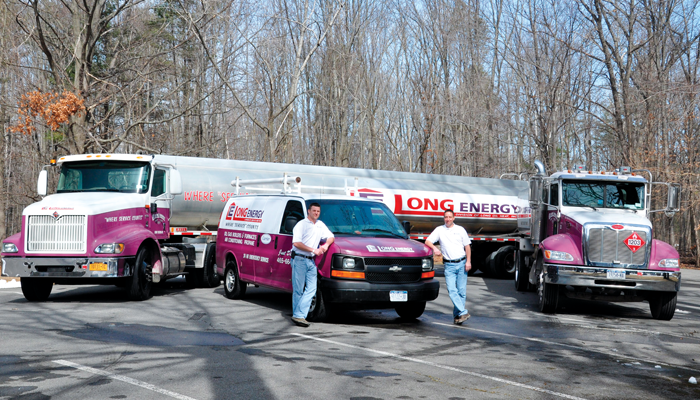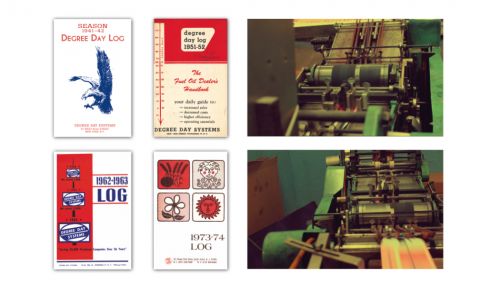All
Tank Data Helps Company Compete
by John MacKenna

Long Energy uses monitors to support commercial delivery
An Albany, N.Y.-based energy marketer is using remote tank monitors to help them succeed in the competitive arena of commercial fuel delivery.
Long Energy, a third-generation family owned business that serves several thousand customers within an 85-mile radius, decided several years ago to expand its commercial fuel delivery business, according to Vice President Roger Livingston. “You need to venture out,” he said. “To grow the business, we had to find other things and diversify. We will not be left behind.”
Management knew that taking on more commercial accounts would be a challenge for dispatch and delivery, because usage would be erratic at some sites, and there would be little margin for error. “Commercial delivery is a low margin business,” Livingston explained. “You can’t work with low margins and have short fills. That’s just not paying the bills.”
The company decided to try remote monitoring, buying 20 monitors with plans to use them on delivery sites such as trucking companies, where usage was hard to predict. “Before, we’d have them on a weekly cycle, one time we would deliver 250 gallons and the next time 700 gallons,” Livingston said. “It was not efficient.”
Search for a Provider
Livingston nearly soured completely on remote monitoring before he connected with his current vendor, WESROC. He tried one company, and their monitors were unsatisfactory. He tried another, and their customer service was awful. On the third try, the monitoring company required Long Energy to buy cellular minutes, and the price was too high. When he finally called WESROC, he asked for a reference and was referred to a client. “I spoke to a gentleman in Texas, and he was tickled pink with WESROC. He was sitting in the same chair as me facing the same difficulties.”
Long now has hundreds of WESROC cellular monitors in the field and uses them on propane, diesel and gasoline tanks for two primary purposes: to discover usage patterns on new accounts and to maintain constant monitoring on accounts with erratic usage. “We’ve taken on so many new customers, and the hardest accounts to figure out are the news ones. That’s why monitoring is so key for us,” Livingston said.
This summer, Livingston is going through the monitoring data that Long Energy has collected in two years of using WESROC monitors and establishing baselines for residential accounts. “Once we monitor a new account for a whole winter we can usually pull off the WESROC and use it on another new customer. We try to use WESROCs on new propane customers and new commercial gasoline or diesel accounts” and then move them off after establishing the account’s usage patterns, he said.
If a new local propane account is for heat only, monitoring is generally unnecessary, but if the customer is not local or uses the fuel for cooking, clothes drying or a generator, Long Energy installs a tank monitor.
Better Experiences
Like all fuel delivery companies, Long Energy is emphatic about preventing run-outs. “We take them very seriously. If a customer runs out at any time during the season, at the end of the season they’re going to think back to it and possibly look to one of our competitors,” Livingston said. “We don’t want that to happen.”
With monitors in the field, Long Energy benefits from positive customer experiences. “I had a trucking company just call me. They said they were looking at their gauge, and it was kind of low, and the weekend is coming,” Livingston said. “I said, ‘We have you at 36 percent, and the delivery is on the truck today.’ He was shocked, in a positive way, that we were on top of it like that.”
Monitoring also has greatly improved Long Energy’s delivery efficiency. The company last year won a county bid to supply 12 highway garages. When they had had the account once before the usage was too unpredictable to allow for consistently efficient delivery. “We went to each site only three to four times this winter and delivered 700-plus gallons into 1,000-gallon tanks. When we had the contract before, we would go 20 times, with short fills.”
Livingston said the effect on company expenses has been excellent. “I’m convinced we’re keeping a truck off the road. Everybody is watching expenses these days, and if you have to take on a couple of drivers and put another truck on the road and insure it, pay overtime, paint and letter the truck, that’s a couple hundred thousand dollars. Everybody wants the best possible pricing, and to accommodate that you have to keep expenses down,” he said.
Efficiency Via Technology
For now, Livingston is manually creating routes for Long Energy’s drivers. He receives a daily e-mail from WESROC that lists customer sites in order from lowest fill percentage to highest. He uses that data to balance efficiency and timeliness in the routing.
Tank monitoring is just one part of Long Energy’s plan to improve business efficiency by leveraging technology. The company is also moving to Cargas Energy back-office software that will provide automated route optimization and informational support for the service department.
Delivery efficiency is essential today in commercial fuel delivery, according to Livingston. “When you’re working with margins, you have to optimize your routes. If not, you are wasting time and money.”
Related Posts
 100 Years of Helping Fuel Retailers Deliver!
100 Years of Helping Fuel Retailers Deliver!
Posted on August 18, 2025
 U.S. Competing to Secure Critical Minerals
U.S. Competing to Secure Critical Minerals
Posted on June 16, 2025
 The Clean Air Act, the EPA, and State Regulations
The Clean Air Act, the EPA, and State Regulations
Posted on May 14, 2025
 Day Tanks Support Back-up Generators in Extreme Conditions
Day Tanks Support Back-up Generators in Extreme Conditions
Posted on March 10, 2025
Enter your email to receive important news and article updates.
